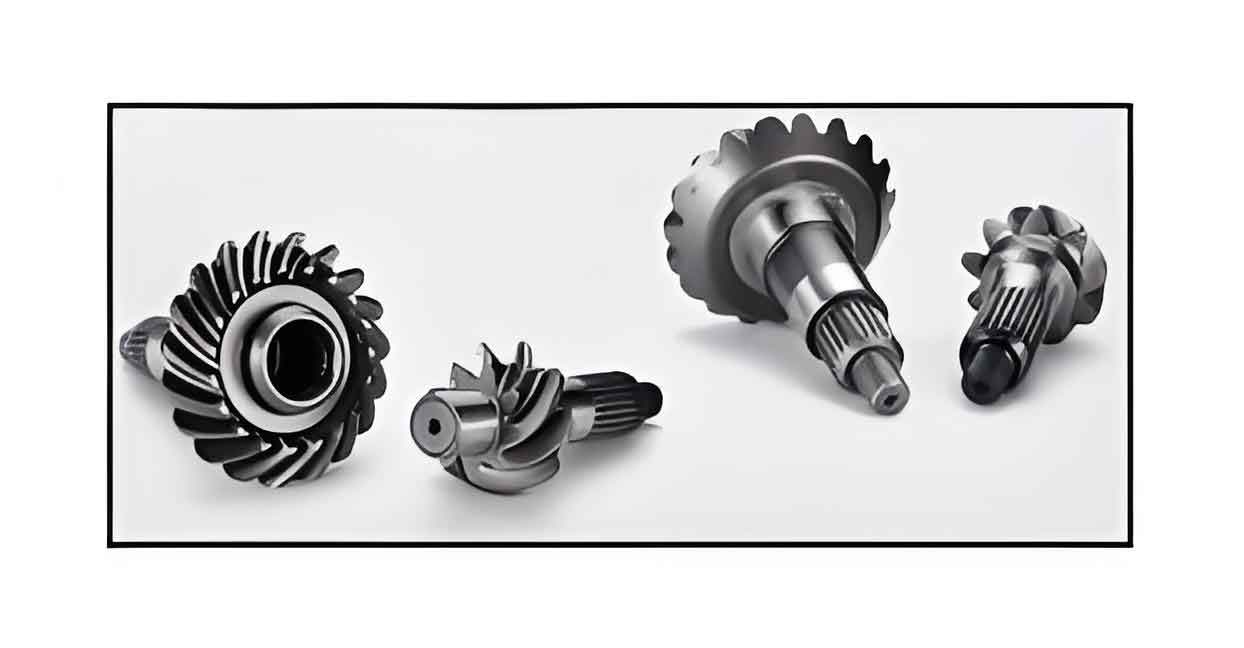Introduction
Material selection plays a crucial role in the performance and durability of a Gear Shaft. The choice of material affects the Gear Shaft’s ability to withstand various operational stresses, including torque, bending, and environmental factors. This article explores the impact of material selection on the performance of Gear Shaft, examining different materials used, their properties, and how they influence the Gear Shaft’s functionality.

Importance of Material Selection in Gear Shaft
Choosing the appropriate material for a Gear Shaft is vital for several reasons:
- Strength and Durability: The material’s strength determines the Gear Shaft’s ability to handle mechanical loads without failure.
- Wear Resistance: Materials with high wear resistance prolong the Gear Shaft’s life by reducing the effects of friction and abrasion.
- Fatigue Resistance: Fatigue resistance is crucial for preventing failures due to cyclic loading.
- Corrosion Resistance: In corrosive environments, materials with high corrosion resistance ensure the Gear Shaft’s longevity.
- Machinability: Materials that are easier to machine can reduce manufacturing costs and improve production efficiency.
Common Materials Used in Gear Shaft
1. Carbon Steel
Carbon steel is widely used in Gear Shaft applications due to its cost-effectiveness and good mechanical properties.
Characteristics:
- High tensile strength.
- Good machinability.
- Moderate wear resistance.
Applications:
- General-purpose gear shafts.
- Low to medium load applications.
Properties:
| Property | Value |
|---|---|
| Tensile Strength | 400-600 MPa |
| Hardness (HRC) | 20-40 |
| Elongation | 10-20% |
| Wear Resistance | Moderate |
| Fatigue Resistance | Moderate |
2. Alloy Steel
Alloy steel contains additional alloying elements like chromium, molybdenum, and nickel, enhancing its properties.
Characteristics:
- High strength and toughness.
- Excellent wear and fatigue resistance.
- Good machinability.
Applications:
- High-stress gear shafts.
- Automotive and industrial applications.
Properties:
| Property | Value |
|---|---|
| Tensile Strength | 600-900 MPa |
| Hardness (HRC) | 30-50 |
| Elongation | 8-15% |
| Wear Resistance | High |
| Fatigue Resistance | High |
3. Stainless Steel
Stainless steel is known for its excellent corrosion resistance, making it suitable for harsh environments.
Characteristics:
- High corrosion resistance.
- Good strength and toughness.
- Poor machinability compared to other steels.
Applications:
- Marine and chemical industry gear shafts.
- Food processing equipment.
Properties:
| Property | Value |
|---|---|
| Tensile Strength | 500-750 MPa |
| Hardness (HRC) | 20-40 |
| Elongation | 15-25% |
| Wear Resistance | Moderate |
| Fatigue Resistance | Moderate |
4. Case-Hardened Steel
Case-hardened steel combines a tough core with a hard, wear-resistant surface.
Characteristics:
- High surface hardness.
- Tough and ductile core.
- Excellent wear and fatigue resistance.
Applications:
- Heavy-duty gear shafts.
- High-load and high-wear applications.
Properties:
| Property | Value |
|---|---|
| Tensile Strength | 600-1000 MPa |
| Hardness (Surface HRC) | 55-65 |
| Hardness (Core HRC) | 20-40 |
| Elongation | 5-10% |
| Wear Resistance | Very High |
| Fatigue Resistance | Very High |
Impact of Material Properties on Gear Shaft Performance
Strength and Load-Bearing Capacity
The strength of the Gear Shaft material directly influences its load-bearing capacity. High-strength materials such as alloy steels and case-hardened steels can withstand higher loads, making them suitable for heavy-duty applications.
Key Points:
- Higher tensile strength materials reduce the risk of deformation and failure under load.
- Materials with good toughness can absorb shocks and impact loads without cracking.
Wear Resistance
Wear resistance is critical for Gear Shafts operating in high-friction environments. Materials with high hardness and wear-resistant properties, such as case-hardened steel, ensure longer service life and reduced maintenance.
Key Points:
- Wear-resistant materials minimize material loss and maintain dimensional accuracy.
- Reducing wear helps in maintaining smooth operation and reducing noise.
Fatigue Resistance
Fatigue resistance is essential for Gear Shafts subjected to cyclic loading. Materials with high fatigue strength, such as alloy steels, can endure repeated loading cycles without failure.
Key Points:
- Fatigue-resistant materials prevent crack initiation and propagation.
- Enhancing fatigue resistance extends the Gear Shaft’s operational life.
Corrosion Resistance
For Gear Shafts used in corrosive environments, materials like stainless steel offer superior corrosion resistance, preventing degradation and failure.
Key Points:
- Corrosion-resistant materials reduce the need for protective coatings and frequent maintenance.
- Prolonged exposure to harsh environments without compromising performance.
Machinability
Machinability affects the ease of manufacturing Gear Shafts. Materials that are easier to machine can be produced more efficiently and cost-effectively.
Key Points:
- Good machinability reduces production time and costs.
- Achieving precise dimensions and surface finishes is easier with machinable materials.
Comparative Analysis of Materials for Gear Shaft
| Material | Tensile Strength (MPa) | Hardness (HRC) | Wear Resistance | Fatigue Resistance | Corrosion Resistance | Machinability |
|---|---|---|---|---|---|---|
| Carbon Steel | 400-600 | 20-40 | Moderate | Moderate | Low | High |
| Alloy Steel | 600-900 | 30-50 | High | High | Moderate | Moderate |
| Stainless Steel | 500-750 | 20-40 | Moderate | Moderate | High | Low |
| Case-Hardened Steel | 600-1000 | 55-65 (Surface) | Very High | Very High | Moderate | Moderate |
Conclusion
The performance of a Gear Shaft is significantly influenced by the material selected. Each material offers distinct advantages and is suited to specific applications based on its mechanical properties. By understanding the impact of material properties such as strength, wear resistance, fatigue resistance, corrosion resistance, and machinability, engineers and designers can make informed decisions to optimize the performance and durability of Gear Shafts. Proper material selection ensures that Gear Shafts meet the operational demands and extend the service life of the machinery they are a part of.
